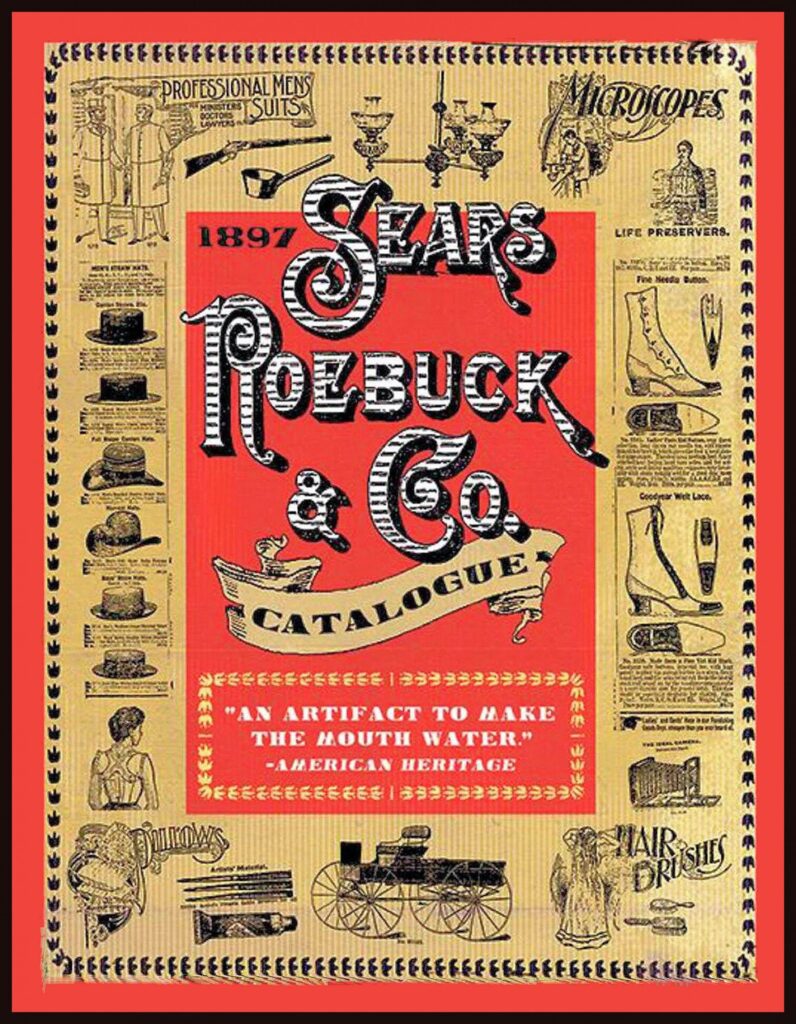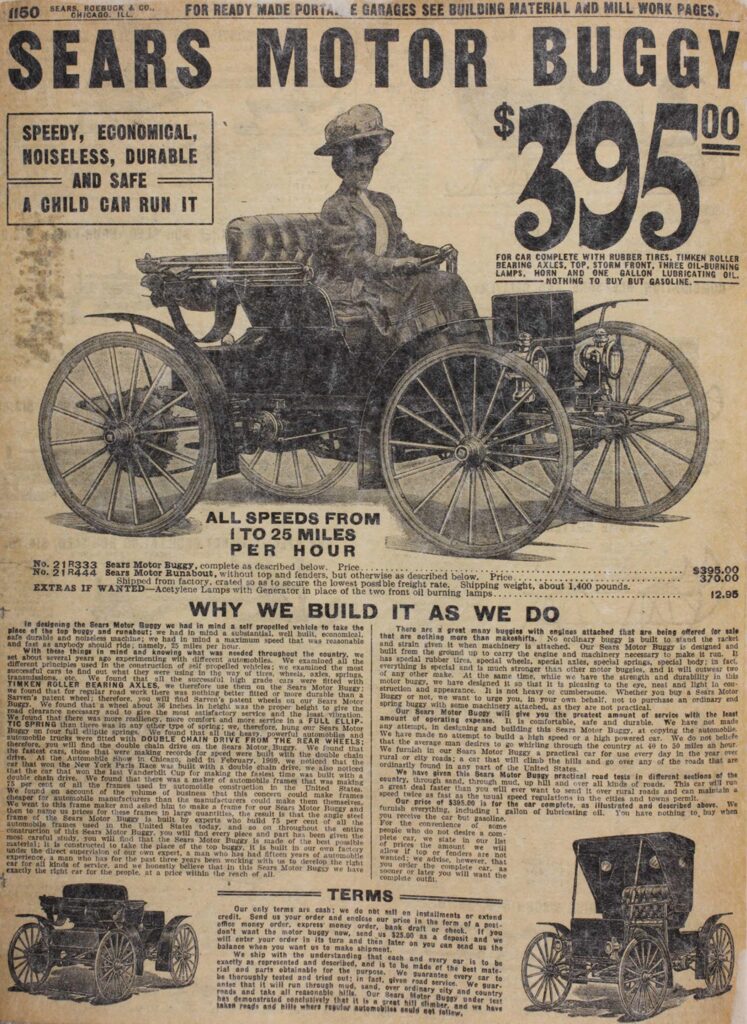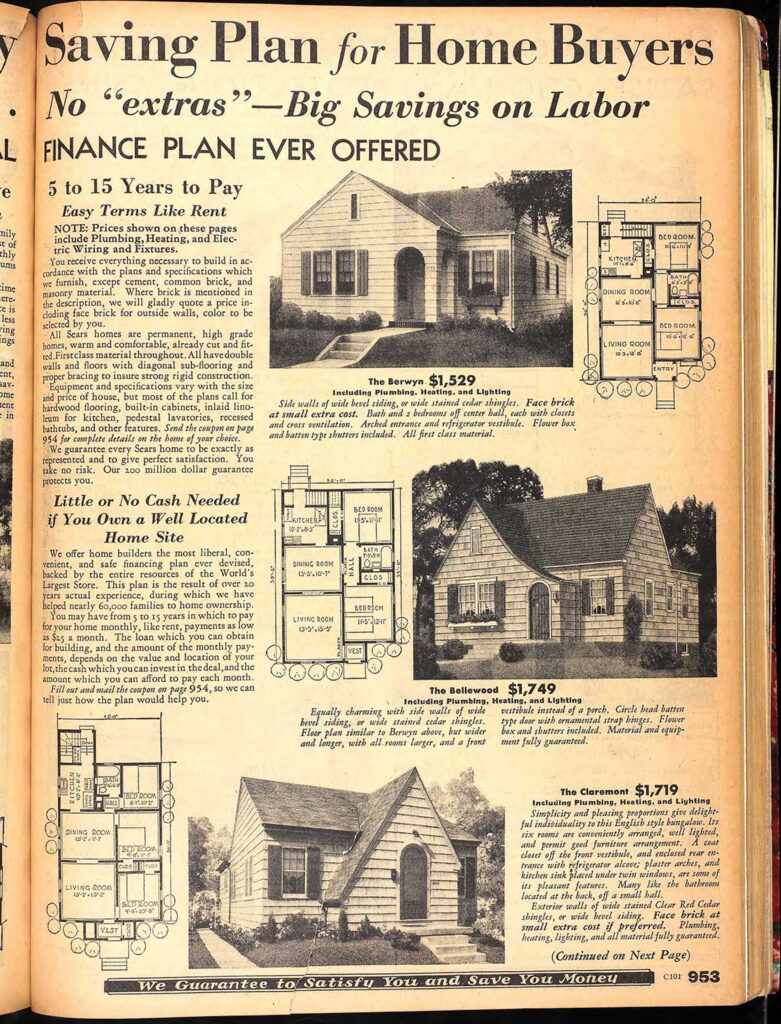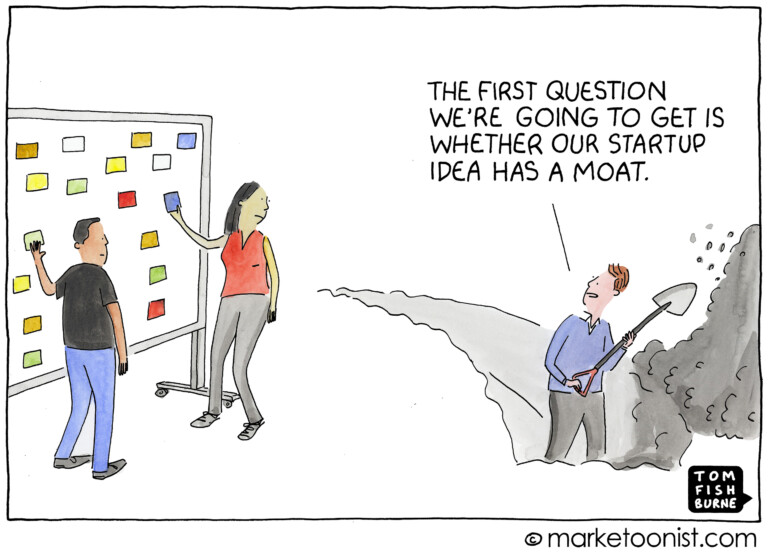If You Ask Me, the Story of Sears, Roebuck and Company is Pretty Darn Cool
And co-founder Richard Sears was a pretty cool dude too.
I bet if you met a drunk Jeff Bezos at the bar and asked him how he came up with his idea for Amazon he’d probably whisper this in your left ear…
“I just took the Sears Catalog concept and put it online!“
Yep, he sure did.
A funny little story about Richard Sears – he worked as a freight agent for a railroad in St. Louis in 1886 when a local jeweler gave him an unwanted shipment of pocket watches which he then resold. Sears then bought and resold more watches and soon quit his job at the railroad to form the R.W. Sears Watch Co and soon hired Alvah Roebuck as a watch repairman in 1887.
Just one year later in 1888, the very first Sears catalog made its debut, and Richard Sears even illustrated the front cover himself declaring it the “Book of Bargains: A Money Saver for Everyone,” and the “Cheapest Supply House of Earth.“

Sears Catalog Cover – Circa 1897
Amazingly, just seven years later in 1895 – the Sears catalog had grown to 532 pages!
That little ‘ole catalog went on to be known as the “Wish Book” and at its peak – over
500 million Sears catalogs were sent out per year!
Both Sears and Amazon had humble beginnings – Sears was originally a watch business, and Amazon was originally a book business.
Soon enough, they discovered the magic growth formula (scale) and applied it perfectly to their businesses.

Maybe you fancy a new Sears Motor Buggy for only $395.00? This ad appeared in the Fall 1909. This nifty little buggy hit a whopping 25 miles per hour, and it was so safe, “a child can run it!“
Sears, like Amazon today, was an absolute monster in its prime.
In fact, Sears alone accounted for 1% of the entire U.S. Economy and two-thirds of Americans shopped there in any given quarter.
Sears also peaked at 3,500 retail stores in the U.S. and was the largest retailer in the entire world.
Ironically, the completion of the 110-story Sears Tower in Chicago in 1974 marked the beginning of a steady five-decade decline and deterioration of its business.
In terms of market valuation – Sears’ stock market capitalization peaked at about $23 billion…while Amazons’ is at a staggering $1.131 Trillion today!
Sadly, as of May 11, 2023, there are only 17 Sears stores left in the U.S. with six locations slated for closing permanently soon.
While today, Amazon continues to grow and diversify its portfolio, now owning over 40 companies, including – Whole Foods Market, Zappos, MGM Holdings, Twitch Interactive, Audible, Pill Pack Inc, Diapers.com and AWS (Amazon Web Services) to name a few.
Some other fun facts about Amazon:
- Amazon sells more than 12 million different products
- Amazon ships ~1.6 million packages per day
- Amazon averages $17 million per hour in sales
- Amazon’s share of the U.S. E-commerce Market was 38% in 2022 (Statista)

Want to buy your next home from the Sears catalog? You could do just that until the early 1940s. The DIY home kit came with everything you needed to build a Sears Home, including instructions. This ad appeared in the Fall 1932 catalog with three offerings around $1700 bucks per home.
It looks like consumers’ preference for convenience and speed will continue into the foreseeable future.
But it does beg the question – is bigger really better?
For that is the unintended consequence.



